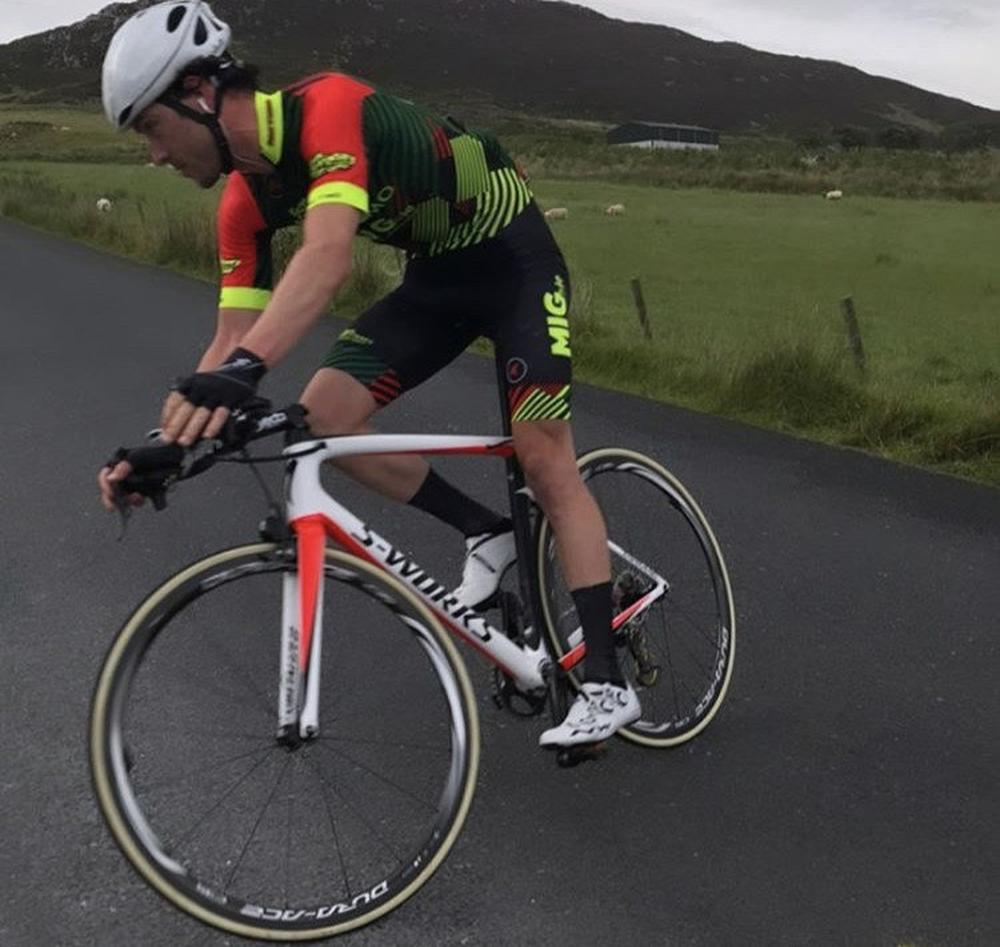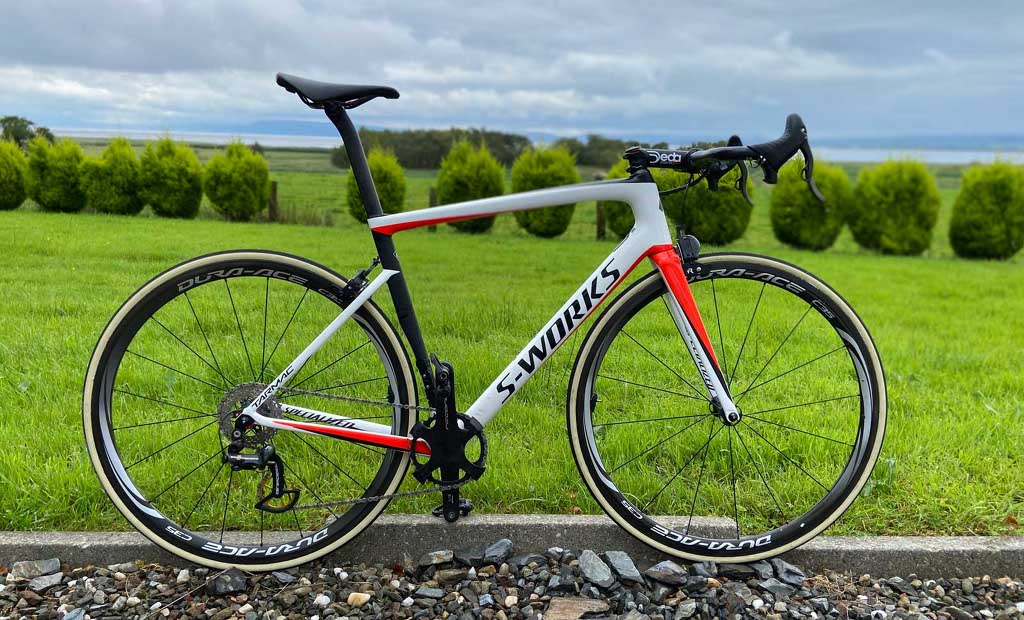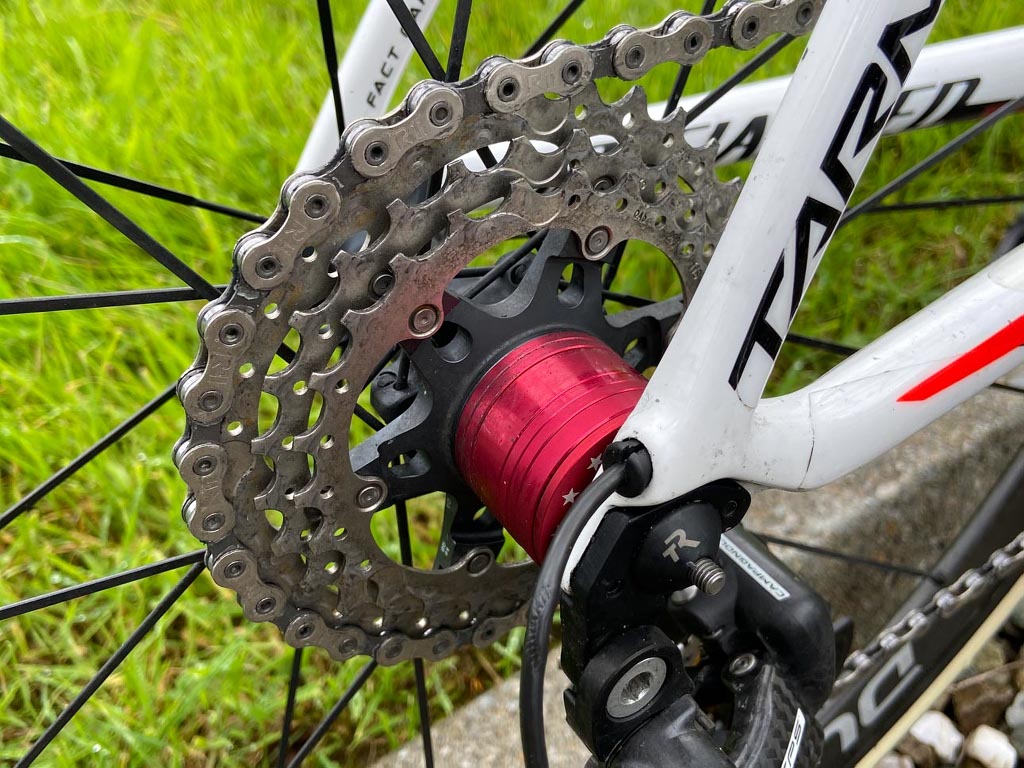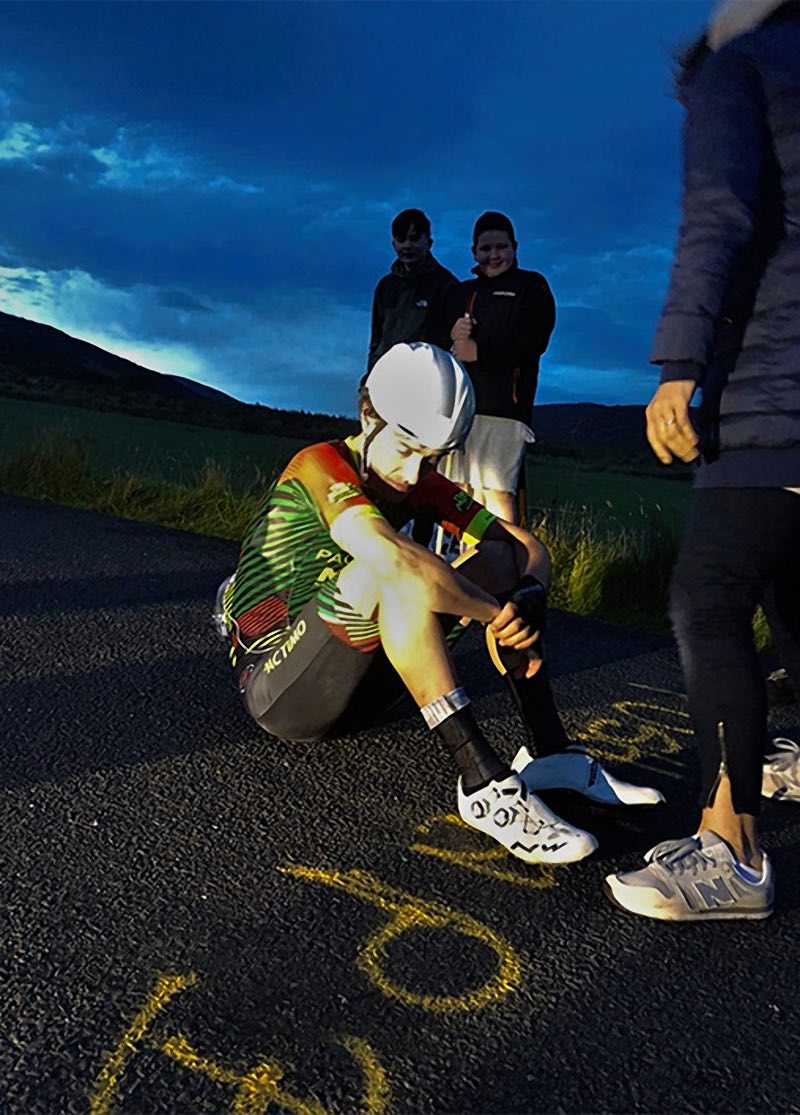I know, I had a ‘pop’ at ‘Everesting’ in a recent rant but when AN Post Flatlands veteran, Ronan McLaughlin contacts me to tell me he’s just broken the Irish record with 8 hour 09 minutes, the fifth best time in history behind Bert Contador’s 7:27, I have to pay attention…
[Since this interview took place, Ronan has broken Contador’s World Record by nearly 23 minutes, ed.]
When did you get the idea, Ronan?
“I had heard about Everesting a number of times over the past few years and always thought I’d like to try it but it never came to any more than a thought.
“I actually first started planning to attempt an Everesting way back in March, I had trained well all winter, was in good condition and then all events where cancelled due to Covid so I thought it might be a good time to try it.
“But I decided that it would be quite irresponsible to ride my bike for what I thought would be 10 hours and more at the height of the pandemic.
“In hindsight the delays where actually a blessing in disguise because it gave me time to plan it properly and ultimately that ensured the attempt was somewhat “easier” and substantially quicker.”

Was there a cause behind it and if so, did you obtain sponsorship?
“Originally it was just a challenge to myself.
“I had heard how hard the challenge was and wanted to give it a go.
“However, the more I thought about it and the fact that there is no actual inherent value in riding up and down a single road for hours on end the more I realised I had to do it for charity.
“The Community Rescue Service (CRS) is a charitable search and rescue organisation operated by volunteers from communities across Northern Ireland.
“You may know the CRS from the BBC documentary, “The Search” following their work across Northern Ireland.
“CRS are the only accredited Lowland Rescue search and rescue organisation in Northern Ireland and hold full membership of the Association of Lowland Search and Rescue (ALSAR).
“CRS are the experts in finding and rescue people if they should go missing.
“Their work is difficult and long but invaluable to the families of those missing.
“CRS provide all aspects of search and rescue falling under the remit of Lowland Rescue including ground, inland water, bike, boat and more.
“Unfortunately we have first-hand experience of the incredible work the CRS do, my wife’s uncle went missing a few years back and the CRS where there night and day in depths of an Irish winter assisting the family and the search.
“Since then I have wanted to raise funds for the CRS.
“The fund raiser is still open (https://gf.me/u/yf5hbz) and if it gets to the height of Everest, £8848, I’ll do another Everesting.”
Tell us about training for it.
“Training for Everesting started very much like training for everything, that is – figuring out the demands of the event and working towards those.
“As I said earlier I had a good winter and was in good condition so the engine was already there it was just a matter of fine tuning it for the specifics of Everesting.
“That involved plenty of low cadence work, tempo and threshold work, endurance work and a few test rides on the climb.
“I tested a number of times using the INSCYD test protocols we use at www.panachecoaching.com and from this I worked out exact target powers but also was able to track my glycolytic capacity and fat utilisation.
“One of the main aims of the training was to reduce this glycolytic capacity, for road racing I usually want a nice balance on this of low but high enough to be able to race, for Everesting I was just focused on lowering it.
“Even with all the training done I still set out on the morning of the attempt quite nervous.
“All the data in the world can’t confirm whether it’s actually possible to summit a super steep climb 63 times in a row so until I had done it I was always nervous about cramping up or “hitting the wall”, thankfully that didn’t happen.”

Tell us about the bike, I believe you worked at getting the weight down; what about gearing, tyres?
“Yeah, I had the bike stripped down as light as I could make it with what was available to me.
“That meant changing it to a 1x system (the climb was so steep and the descent so fast I never had a chance to get into the big ring so why carry an extra chainring and derailleur that wouldn’t get used), I had a 39×32 gear ratio on Dura Ace c24 alloy wheels with some pretty light tyres and latex tubes.
“I also removed most of the bar tape and bottles cages.
“If the fund raiser does get to £8848 and I do have to ride again I have a few more ideas I can try with the bike that should help a bit further – but for the first attempt I erred on the side of caution for most things, again because I didn’t know what I would need and what I wouldn’t.”

What about clothing?
“Clothing is another thing I looked quite closely at.
“I’m super lucky that our Dan Morrissey-MIG.ie-Pactimo cycling team has an excellent clothing sponsor in Pactimo and as such we have an array of skin suits, climbers’ jerseys, mesh lightweight bib shorts and all the rest that I could choose from.
“In the end up I decided on Pactimo’s Ascent Flyte suit which is a one piece race suit with pockets in the rear (to carry the phone for music and back up GPS head unit), some very trick fabrics and great ventilation.
“It turned out to be the perfect choice, super comfy, breathable and fast.”
Why THAT climb?
“That’s a good question.
“I looked at a lot of climbs, some shallower gradients some steeper but in the end up it came down to what I mentioned earlier about the fact that there isn’t actually much sense in repeating the same hill countless times unless it means something.
“When I first got into cycling I used to cycle to Mamore Gap on a Saturday just to try to summit it ONCE.
“It took me three months of trying I think but eventually I got up it the whole way without walking and I felt like I was going to be a world champion.
“So to go back now and try to climb it 63 times without walking seemed like a nice challenge and very relatable way to show what is possible when you set your mind to something.
“Mamore Gap was also the scene of my win in the Irish National Hill Climb Championships in 2008 and of course has been the scene for many epic stages in an Ras Tailteann.
“The first Ras of the nine I have ridden came over Mamore Gap and finished in Buncrana with eventual overall winner Tony Martin laying the foundations for success on the roads between Mamore Gap and Buncrana.
“So it’s been a climb that has been ever present in my time on a bike.
“I couldn’t possible count how many times I have been over it in the intervening years but I do know at one point I would have ridden it as many as six times in a week and even remember doing a number of laps of it on Christmas day 2011 knowing that the 2012 An Post Ras had a stage which would tackle the famous climb.”
What’s the ‘governing body’ for these rides?
“The Australian group, Hells 500 “are the keepers of the Everesting Concept” and ratify all submitted attempts with those which have completed the required elevation gain being entered into their “Hall of Fame.”
“They have a website www.everesting.cc which has a great calculator and guidance section.
“It was really useful in the run up to the challenge.”
How is the ride ratified?
“It’s quite a simple process but nerve racking nonetheless.
“I’m sure everyone has heard by now about Lachlan Morton’s world record breaking ride which ended up being removed from the records because it turned out that he hadn’t completed enough elevation gain.
“So this was always in the back of my mind, just to be sure to be sure I did an extra two laps on the day.
“It’s then a case of uploading the ride to Strava, going to Everesting.cc, going to their submissions page and then logging into Strava via their website.
“You then just select the ride, select the segment that you have used for the challenge and then hit submit.
“Andy Van Bergen who’s ratifies each ride then goes through it to ensure the correct elevation has been reached and if so the ride, rider and climb are entered into the Hall of fame.”

Tell us about your support team.
“My support team was incredible, without them I’d still be out there trying to finish it.
“‘The main team was my Dad, Carl McLaughlin and fellow Foyle CC members and committee members Alan Harkens and Andy Deery.
“My Dad and Andy where on hand all day to marshal the turn round point, because the descent was so steep they were letting motorist know that I’d be coming down and to keep an eye out.
“Most who happened to come along on the day and heard what was happening tended to get quite interested and gave me a huge amount of support as they passed me on the climb.
“Alan Harkens was key in the weeks before hand in helping select the climb and the day etc.
“On the day Alan looked after all the hydration and fuelling requirements, kept an eye on my pacing, kept me confident but controlled so as to not mentally dip or over cook the early ascents which would have cost me later in the day.
“Both Alan and Andy kept track of the lap count and I also tracked this on my Garmin but it was great to know there were other people also tracking it in case I messed it up as fatigue set in later in the ride.
“My mum (Sandra), sister (Caoimhe) and her boyfriend (Tiernan) got there around half way through.
“My Sister and Tiernan then marshalled the only junction on the descent and my Mum took on all manner of tasks to ensure everything went smoothly.
“At one point she went down to “Dunree Fort” which is a popular tourist attraction, also home to the famous “Coffee Cup” cafe to get me an espresso and coffees for the team.
“She also brought along potatoes, and a camera to capture all the action.
“Most import is my Wife Rachel who somehow puts up with all my biking carry on and on the day brought our daughter Sophia down to see the action on the final few laps.
“Sophia can be a tough one to entertain at the best of times so we decided the side of a mountain in Donegal might not be the best place for her to spend a full eight hours and more.”
Were you off the bike at all?
“I stopped twice to refit the chain that had bounced off but that was literally for two seconds.”
Any ‘bad patches’?
“I genuinely couldn’t believe how well it went for the most part.
“Everyone talks about how hard it gets so I was waiting all day for a really terrible time at some point but it never really came.
“I did have some tough moments in the final hour or two but the huge support I had and the fact I was so close to the finish got me through.”
The fifth best time ever – can you improve it, or was it a once in a lifetime job?
“Initially I said I went as fast as I possibly could, I also said I would never do it again.
“However, having recovered from it now, spent some time analysing how it went and also having the experience of having done it once, I’m confident I could go quicker but at the same time I’m quite happy with where I am.
“The night before I did the Everesting I genuinely would have taken 9:59 had someone offered it to me.
“As I said, I had no idea if it was actually possible, I had ran countless models of the event and they all suggested under 9hrs was possible, the model I did with the exact weather forecast and other variables the day before the challenge suggested 8:20 but I kept reminding myself that “all models are wrong, some are useful”.
“I assumed I would crack and lose pace quite badly which the model wouldn’t have accounted for.
“In the end up it turns out the model was wrong but thankfully it was wrong in the right direction.”

Did you spare a thought for Diarmuid Kavanagh who was previous national record holder for a whole 24 hours?
“Oh for sure, Diarmuid was also attempting the challenge for charity and as such I was very conscious of taking any attention away from the very worthy cause he was raising funds for.
“Combined with uncertainty about the weather I decided not to announce my attempt until literally the night before when Diarmuid had already finished.
“I had also spoke to a mutual friend earlier in the week to let Diarmuid and his team know I was also going to attempt an Everesting on the same weekend and to wish them all the best.
“I follow Diarmuid and his team on instagram and know some of them, they always seem to be having a great time on the bike and seem like they are always having a right laugh, good guys.”



